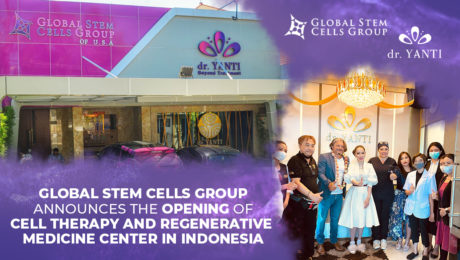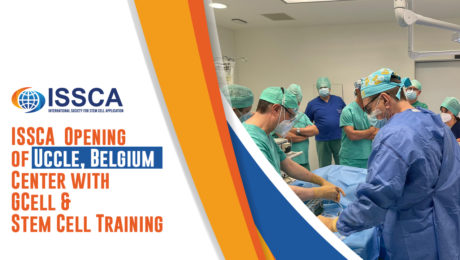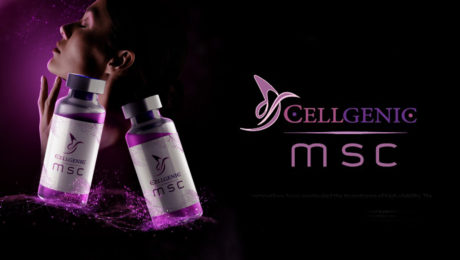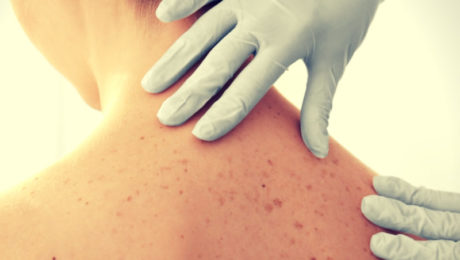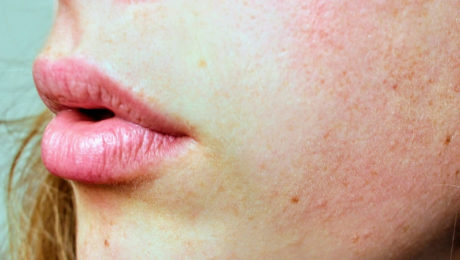Global Stem Cells Group announces the opening of cell therapy and regenerative medicine center in Indonesia
Global Stem Cells Group is pleased to announce the establishment of a cell therapy and regenerative medicine facility in Indonesia. The new facility emphasizes Global Stem Cell Group’s objectives of bringing the advances and benefits of regenerative medicine to parts of the world where they are less well known.
By enabling cooperation with Dr. Yanti Kusmiran Clinic in Indonesia , this new center will promote high standards of service in Regenerative medicine across Indonesia.
The vision
This center is part of an expanding medical network of partners, and it will formalize and strengthen ties, establishing a global center of excellence to guarantee that we effectively use the underlying basic stem cell technology for medical conditions where traditional therapeutic approaches seem to have failed . This is consistent with the GSCG’s overall strategy for developing regenerative medicine through data-driven studies, disease modeling, and cell-based therapeutics.
There wouldn’t have been a better partner to go sign this deal with, Dr. Yanti Aesthetic Clinic provides the organizational and physical infrastructure needed to disseminate need-based stem cell and gene therapies locally. And Global Stem Cells Group’s outstanding cell and stem cell biology and disease pathophysiology give an edge to any patient they’re prescribed to.
GSCG has developed an enviable reputation in regenerative medicine. So, this presents the perfect opportunity to translate breakthrough therapies from basic discoveries to useful products drawing on the skills and local knowledge of Dr. Yanti Aesthetic Clinics.
Group managing director Benito Novas provided the clearest description of the new strategic direction and GSCG’s objectives. “Our main goal is to make regenerative medicine benefits a reality for both doctors and patients all around the world. The company is expanding and establishing itself as a market leader.”
The current market outlook
Cell therapies are becoming an increasingly effective and safe clinical solution to treat conditions that traditional medicine offers only palliative care. That is why patients all over the world are looking for a natural regenerative alternative without the use of drugs and medicines. . However, its application is still in its early stages. Moves like this one try to reduce the impediments to widespread adoption. This effort will play a significant role in the development of regenerative medicine in Indonesia , allowing for continuous improvement through research and development.
Dr. Yanti Aesthetic Clinics
Dr. Yanti Aesthetic Clinics is a premier cosmetic and aesthetics clinic in Kelapa Gading, Jakarta Utara. Since its inception in 2004 in Surabaya by Dr. Khoe Yanti Khusmiran, the hospital has expanded to over 6 branches throughout Indonesia. They provide a range of skin and body enhancement treatments and stand to gain from stem cell therapies for their minimally invasive and non-invasive procedures.
The newly formed association will deliver revolutionary medicines through these clinics to assist patients in avoiding permanent harm and live healthy lives. Changing the paradigm from asymptomatic treatments to cures that improve quality of life. Dr. Yanti Kushmiran was enthusiastic about this announcement. He said, “We are honored to be a part of GSCG, which has an over 10-year track record in the market and a strong international reputation. We will provide more services to our patients because of this new partnership.”
GSCG delivers leadership in regenerative medicine research, patient applications, and training through our strategic global networks. We endeavor to enable physicians to treat otherwise incurable diseases using stem cell therapy and to improve the quality of life and care across the world.
For this reason, we work with innovative next-generation therapy providers like Dr. Yanti Aesthetic Clinics to give access to one-of-a-kind holistic, and safe, treatment options.
More information regarding this transaction and the Global Stem Cells Group may be found at GSCG.
Global Stem Cells Group is a publicly traded company operating under the symbol MSSV. https://finance.yahoo.com/quote/mssv/
- Published in News
Reasons to Choose Cellular Therapy in Mexico
TUESDAY, 10 AUGUST 2021 / PUBLISHED IN BLOG
Exosomas Celulas madre Cancun
Reasons to Choose Cellular Therapy in Mexico
What is Cellular Therapy?
Cellular Therapy, also known as regenerative medicine, is a groundbreaking field of medicine today that aims to repair diseased, dysfunctional, or injured tissues using Stem Cells and their derivative products. Stem Cells are the basic building blocks of the human body. Before cells specialize into lung cells, heart cells, or brain cells, they are stem cells. Under the right conditions in vitro or in a lab, stem cells can multiply to form more cells, known as daughter cells, which then become specialized cells in the tissue that is being treated.
Benefits of Cellular Therapy
Regenerative medicine stimulates proper healing processes within the body. Although there are various types of regenerative treatments, therapy using Mesenchymal Stem Cells is the most powerful available to physicians today. Clinical trials have proven that these cells can treat a wide array of medical conditions, especially musculoskeletal conditions. It significantly reduces long treatment times typical of standard care for lesions and other conditions and shortens rehabilitation time from years to months, offering a valuable alternative to expensive joint surgeries.
Stem Cells also have an incredible capacity to combat illness, fortifying the immune system and lowering inflammation common with autoimmune disorders. Due to the immune booster that cellular therapy offers, many clinics provide IV lines for patients looking to use stem cells to stimulate their immune system. This immune system booster can significantly enhance the quality of life for immunocompromised patients.
Cellular Hope Institute Cancun | Cinematic Trailer
The Most Important Properties of Stem Cells
- Their ability to multiply and regenerate themselves
- Their capacity to heal and renew damaged tissues
Cellular Therapy treatments based in Mexico have become revolutionary due to the benefits reported by patients, including reduced inflammation, increased mobility, and the healing of scar tissue. This increase in popularity has led many people to seek quality and affordable cellular therapies.
Why Choose Cellular Therapy in Cancun, Mexico?
Advanced Cellular Cultivation
One of the primary advantages of receiving cellular therapy treatment in Mexico is the ability to cultivate and reproduce cells extracted from patients in a laboratory environment. This means patients can receive a higher concentration of cells, leading to improved results.
Affordable and Comprehensive Treatment
Mexico is an excellent option for more invasive treatments requiring a larger operating team and more medical products. As one of the Western Hemisphere’s largest medical tourism capitals, treatments in Mexico are performed in FDA-compliant hospitals and offered at a more affordable price point. A multiple-day cellular therapy treatment in Mexico is far more affordable than similar treatments in the United States and Canada.
Advantages of Choosing Mexico
- Affordability: Lower cost of treatments compared to the US and Canada.
- Better Cellular Products: Ease of cultivating cells in a laboratory and the ability to use naive cells.
- Legal Status: A wide variety of treatments are legally available.
Cellular Hope Institute
At Cellular Hope Institute, we evaluate, diagnose, and treat patients worldwide with the latest regenerative medicine modalities. We provide an extensive support network to ensure a completely worry-free experience, arranging travel and accompanying patients every step of the way to guarantee a calm, safe, and enjoyable trip to Cancun.
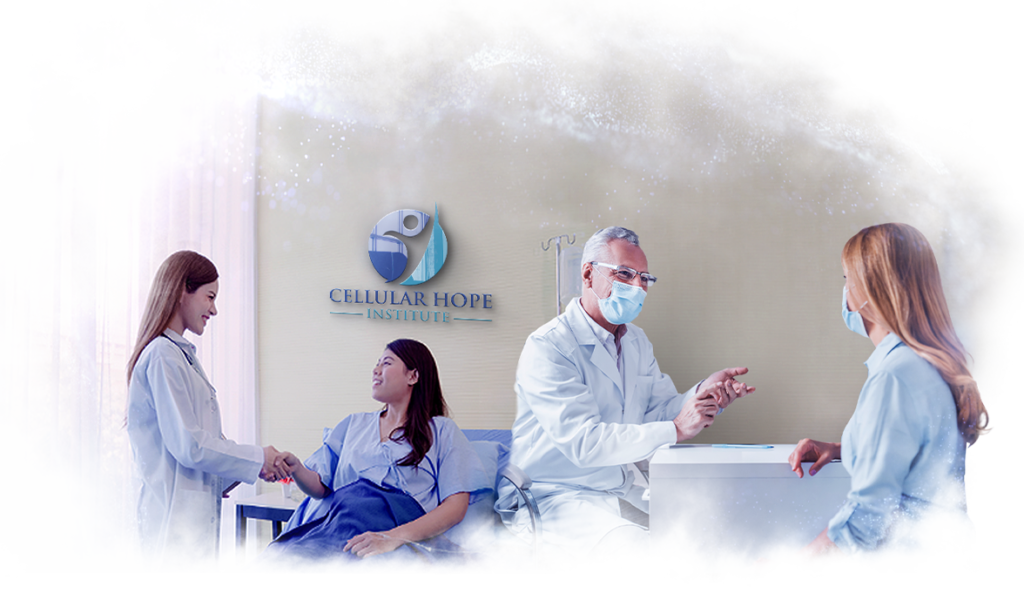
Our Team Will Assist You With:
- Scheduling your treatment dates
- Booking flights
- Hotel reservations (many hotels are a short walk from the hospital)
- Organizing transport during your stay in Cancun, including airport transfers
- Accompanying you to and from the hospital and answering any questions along the way
Our hospital is located in the center of Cancun, in an area known as ‘Stem Cell Circle,’ famous for its clinics and hospitals specializing in regenerative medicine research and treatment.
Our Commitment
We are dedicated to inspiring hope and improving our patients’ well-being by offering effective treatment with careful screening and a professional atmosphere where the patient’s health and happiness are paramount. Our mission is to provide the best possible experience through our committed staff, from patient outreach and coordination to your operating physician. We aim to alleviate your condition using the latest technology and quality care because our patients are our top priority.
Contact Us
Get to know the list of conditions that can be treated at our center by visiting the link below:
Additionally, you can contact us directly through the following email address:
info@cellularhopeinstitute.com
- Published in Blog
ISSCA Opening of Uccle, Belgium Center with GCell & Stem Cell Training
After several months of organizing and developing a location, the Global Stem Cells Group has finalized the construction of a laboratory and regenerative medicine research center in Uccle, Belgium.
This facility serves both as a regenerative medicine treatment and research center, but also as a plastic surgery clinic. In addition to this, one of the primary goals of the Center is to serve as a place for the fostering of knowledge and experience regarding the different products and equipment required for the application of cellular therapies. As part of the inaugural ceremony a group of physicians were trained in the setup and use of the various regenerative medicine protocols and application process of these cells into the patients.
This center is a push into Europe for the Global Stem Cells Group. As the science advances, newer and more advanced therapies and technologies are being developed and released into the market with each passing month.
With the European Union being one of the largest consumer markets in the world, the finalization of a brick-and-mortar location in Brussels, Belgium is one that will mean great things for the Global Stem Cells Group, and the presence and proliferation of regenerative medicine throughout Europe and the world.
“This was a wonderful opportunity that we could have. It goes to show that even during this pandemic, the medical community is one that is still going strong. We’re still rallying together to look for new breakthroughs, and come up with the most beneficial treatment options for patients,” Said Benito Novas, founder of the International Society for Stem Cell Applications, “In addition to this, it also provides an excellent platform for the distribution of regenerative medicine therapies and equipment, including the revolutionary new GCell Machine,”
Indeed, the inaugural training at the Stem Cell Center in Uccle, Belgium was one that covered both of the more traditional methods of stem cell isolation and application– adipose and bone-marrow derived autologous cells, but this training was also one of the first in which the company had the ability to demonstrate the novel GCell Machine. Using a precise system of blades and filters, it is able to process a stem cell sample from adipose tissue in less than half of the time that it would take a physician to do so through traditional means.
This allows the patient to be more comfortable throughout the shorter procedure, as less anesthesia is also required than when operating under traditional means. The GCell is a minimally invasive, portable machine that allows physicians to fully unlock the potential of regenerative medicine as a component in their practice. Using their global network of distributors and licensed vendors, Global Stem Cells Group is working fervently to ensure no interruption in the global availability of the most cutting-edge regenerative medicine products.
- Published in News
How Cellgenic MSCs Revolutionize Regenerative Medicine
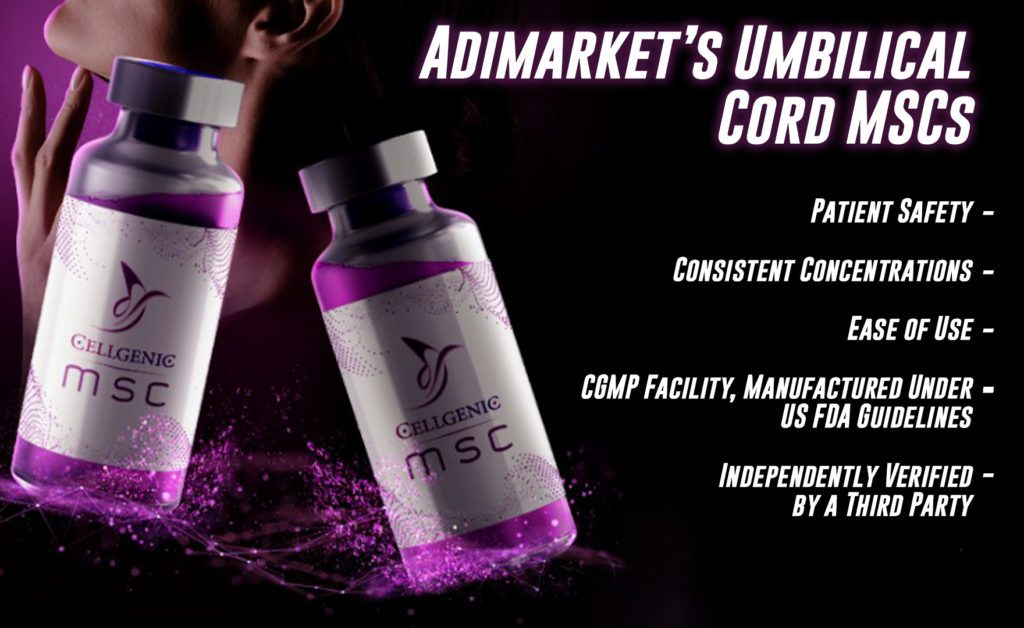
Stem Cells are revolutionizing the field of regenerative medicine, due to their intelligence. Once administered into the patient, they are able to identify and target areas of disease and damage. Adimarket’s Mesenchymal Stem Cell Product excretes growth factors, cytokines, and proteins, which all play a key role in the regeneration of tissue. Their anti-inflammatory and immunomodulatory properties mean that it is difficult for them to be rejected by the body. Additionally, they increase blood flow to the vital organs which need it the most.
Many proprietors of MSC products will claim that it is not necessarily important to have a high ratio of viable cells. They claim that it does not matter how many cells are ‘not viable’, or dead, so long as there is a high enough number of viable cells– however, current research has shown that this is not the case. These dead cells are detectable by the immune system, and it is believed that they can create an inflammatory response within the body at the treatment area, which would lower the effectiveness of the regenerative medicine treatments.
This bending of the science is harmful to our industry, which is why knowledgeable purveyors put one thing above all else– consistency. Our cellular concentrations are the same throughout each batch, and we make sure that there is a high ratio of viable cells. All of our samples are independently verified by a third party laboratory, and have been selected for their phenotypic and genotypic profile, characterized for optimum growth and stability. When the proper care is taken, Mesenchymal Stem Cell products have been identified as having the highest output of growth factors and stem cell factors among the current standards of care– as well as properties of angiogenesis, immunomodulation, and the potential for endogenous repair.
Cellgenic has been working for over a decade, constantly reinventing itself and reinforcing the products that we offer with the latest advancements in the field of regenerative medicine. We take every painstaking measure possible to ensure that the cellular samples that our customers use to treat their patients are second to none– this includes the consistent concentrations of our sample, which are the same throughout ensuring that every patient gets the same treatment. We offer the product in 10 million or 30 million live total nucleated cells, where other fabricators would have the same number of total cells. We ensure that every single product that we send out has been tested for low amounts of annexin, which is a cellular protein which serves as a marker for cell death.
All our Mesenchymal Stem Cell products come in 1cc vials cryogenically preserved– they are shipped overnight within the United States, conveniently delivered to your door in the morning. For use, the product is passively thawed between the palms of your hands– and ready to use when your patients are. MSC 10 contains 10 million live cells and is recommended for a single joint, or a small area. However, the MSC pure pro has 30 million live cells,and can be used for larger applications, or for up to three joints in the same patient at the same time.
If you are interested in finding out more about Cellgenic MSCs, you can send an eMail to info@stemcellsgroup.com
- Published in News
Platelet-Rich Plasma For Bone Healing: Myth or Fact?
WEDNESDAY, 11 APRIL 2018 / PUBLISHED IN BLOG
Platelet-Rich Plasma (PRP) has a proven record for healing soft tissues and other living tissues. But can it actually heal bones? This could mean PRP, when applied to an affected area such as an elbow joint, knee, or backbone area, heals everything within its reach, including bones. Is that really why PRP works? Let’s examine.
Platelet-Rich Plasma for Bone Healing
Bones are not just lifeless matter attached to living tissues. They are as much living as the tissues themselves and are constantly changing. Old bone cells are broken down and replaced with new ones in a three-part process called bone remodeling. This involves resorption (digestion of old bone cells), reversal (birthing of new cells), and formation (new cells turn into fully formed bones).
This process, like other biological processes in the body, requires hormones and growth factors. Some of these include parathyroid hormone (PTH), calcitriol, insulin-like growth factors (IGFs), prostaglandins, tumor growth factor-beta (TGF-beta), bone morphogenetic proteins (BMP), and cytokines. For this discussion, we need to remember only one thing: a large number of cytokines and growth factors are involved in the bone remodeling process. This means we can accelerate the bone remodeling process by supplying these cytokines and growth factors as suggested by various studies.
Why Platelet-Rich Plasma?
Autologous Platelet-Rich Plasma (PRP), being completely “whole and natural,” can more closely simulate a highly efficient in-vivo situation than anything else made up of artificial recombinant proteins. In PRP, we take advantage of the biological benefits of growth factors whose functions we know as well as those we do not know yet. From the 15+ factors we know are in PRP, including platelet-derived growth factor (PDGF), transforming growth factor-beta (TGF-beta), platelet factor 4 (PF4), interleukin 1 (IL-1), platelet-derived angiogenesis factor (PDAF), vascular endothelial growth factor (VEGF), epidermal growth factor (EGF), platelet-derived endothelial growth factor (PDEGF), epithelial cell growth factor (ECGF), insulin-like growth factor (IGF), osteocalcin (Oc), osteonectin (On), fibrinogen (Fg), vitronectin (Vn), fibronectin (Fn), and thrombospontin-1 (TSP-1), we’re supplying a “holistic” set of nutrients for healing that cannot be mimicked by those obtained artificially.
PRP: Organic Fertilizers for the Body
The difference with PRP is akin to adding chemical fertilizers versus organic fertilizers to plants. Chemical fertilizers are rich in essential nutrients that we know are needed for crops. On the other hand, organic fertilizers supply nutrients not only to the plants but also to the soil, improving the soil structure and tilth, water-holding capacity, reducing erosion, and promoting slow and consistent release of nutrients to the plants. Clearly, organic fertilizers are better, aren’t they?
Platelet-Rich Plasma is like organic fertilizers for our body.
Bonus: Strong Antimicrobial Properties
PRP’s healing function also has synergistic antimicrobial properties. A new study confirms that using Platelet-Rich Plasma in surgeries may have the potential to prevent infection and reduce the need for costly post-operative treatments. That’s a nice bonus for the organic fertilizer of our bodies. Perhaps there are more benefits to discover.
Conclusion
The scope of Platelet-Rich Plasma is growing as the scientific community continues to unearth its inherent properties. PRP is an unignorable and unavoidable component of healing.
- Published in Blog
Three popular PRP Treatments for Skincare
THURSDAY, 15 MARCH 2018 / PUBLISHED IN BLOG
Thousands of skincare centers across the nation provide at least one kind of PRP treatment. However, most do not go any further than micro-needling with a topical solution. This is mainly because it is far simpler than all other methods, and it is incredibly popular. However, it would make more sense for many practices that have invested in equipment to add PRP injections as well.
PRP Is Growing Substantially
Regardless of what is being treated, the protocol for obtaining PRP is the same: draw the blood, place it in the centrifuge, and then extract the PRP from the rest of the material. This simplicity, combined with PRP’s vast usability, can create significant and mind-blowing advances in modern medicine.
This includes skincare, as the PRP obtained from patients can be used in a plethora of ways. Here are a couple of examples of what can be performed by dermatologists and plastic surgeons worldwide.
Skin Augmentation
Adding a topical solution of PRP combined with microneedling can help regenerate dying skin cells and make the skin feel soft. Although this will probably work for most clients, many might want more. For instance, if you want to plump up the face, injecting PRP into the dermis can provide both beauty and a healing process.
If you want to create volume, you will need a filler. One way to do this is by using a Platelet-Poor Plasma filler (PPP), often left over from the PRP process. You can also use Hyaluronic Acid. A combination of these with PRP has been known to provide wonderful results, with some clinicians boasting a 100% success rate.
Vitiligo Correction
Many companies spend millions of dollars to find out how to turn defective cells healthy again, often looking into DNA technology. However, simply utilizing PRP may provide the same results. Some studies have shown that adding CO2 laser therapy for correcting vitiligo to a PRP treatment can increase its effectiveness by four times. This can also be beneficial in other areas, such as correcting wrinkles and even acne scars. So combining PRP treatments with conventional therapies can boost the effects tremendously.
If PRP can help boost the effects of lasers, it may also boost the effects of other skin therapies. This is a great opportunity to continue the work you do, but this time more effectively due to a simple method. Hundreds of skincare facilities are already providing this for their clients.
Hair Rejuvenation
Mesotherapy is a common treatment that utilizes microinjections to deliver medication throughout the skin’s surface. This procedure has provided great quality results by adding peptides and vitamins to the mix. However, one of the best ways to incorporate this into your practice is by using PRP therapy.
Mesotherapy can also be used to provide an even amount of PRP all over the body, including the face, neck, hands, etc. This helps to rejuvenate the skin and reduce wrinkles, discoloration, and stretch marks. However, it works best for hair loss treatments. In fact, adding PRP to mesotherapy has exceeded the industry’s expectations.
This is why PRP therapy is something every skincare clinic should offer. Since hair loss affects both men and women, it is important to make your treatments as effective as possible. Your patients will benefit from it, and satisfaction will rise. Is there any other reason to put it off?
“But I Never Heard Of Them!”
Some of these treatments and combinations are incredibly new, so new that many might not have heard of them before. This is why signing up to use them as soon as possible is vital. This way, you can be a step ahead of the competition when it comes to providing great services.
The demand for PRP is only growing over time, and the sooner you can get on board, the better off your practice will be. If you are interested in learning more about PRP therapy or checking out our line of PRP equipment, visit the Adimarket website.
PRP provides more effective treatments in less time, for less money, and with more satisfaction. Many practices have put their trust in this treatment and have been reaping the long-term benefits. PRP is here to stay. Are you ready to seize the potential of this great medical revolution.
- Published in Blog
Why Dermatologists Should Use Platelet-Rich Plasma (PRP)
WEDNESDAY, 14 MARCH 2018 / PUBLISHED IN BLOG
PRP is a powerful means of regenerating tissues and has seen substantial growth in popularity among patients, especially those who suffer from alopecia. This is despite the apparent lack of evidence that supposedly surrounds the treatment.
Is It a Lack of Evidence or Just a Lack of Funding?
The lack of widespread research may have more to do with funding than anything else. Many of the studies currently available about PRP were unfunded, especially on the subject of hair regeneration. However, despite this lack of funding, the demand for PRP treatments for hair loss is growing at an unprecedented rate.
Types of PRP Kits
When it comes to PRP kits, there are three kinds to choose from:
- Kits that use gels
- Kits that create a buffy coat
- Kits that create a buffy coat utilizing a double spin.
It is generally agreed that the last option creates the most reliable and concentrated form of PRP possible, at 5-7 times the baseline amount of platelets. This concentration level also has the most nutrients, which helps in the regeneration of blood vessels and stem cells.
Combining PRP with Micro-needling
One commonly recommended tactic is to combine PRP hair regeneration with micro-needling and a topical layer of PRP. This can be beneficial in some cases. Micro-needling creates small amounts of trauma, prompting the body to react with a healing response. This response, mixed with PRP, can help stimulate the growth of new cells.
In some instances, a dermatologist might have three sessions, with the first two being PRP injections and the middle one being micro-needling with a PRP topical solution. However, micro-needling is completely optional. Whether you choose to use this method or not, you will still be injecting the patient with PRP at the scalp.
Combining PRP with an Allograft Matrix
Many hair regeneration experts combine PRP with an allograft matrix. These are often used for healing wounds as they activate inactive adult stem cells. This makes wounds heal faster. Allografts act like a scaffold, proliferating cell regrowth and speeding up the healing process. Many experts in the field have noted a high degree of success using this method.
Allografts are generally made from pig bladder tissue. However, a better type of allograft is made from amniotic tissues and fluid. This type of allograft can be utilized with little or no chance of being rejected by the body, unlike those made from pig bladders.
Medications vs. PRP
The main drugs commonly used to regrow hair are Minoxidil and Finasteride. These were designed to prevent male pattern hair loss but did almost nothing to regrow lost hair. These drugs are known to be temporary solutions, and if patients stop taking them, the benefits quickly reverse. They are also not 100% effective at stopping hair loss but can slow the progression.
However, PRP is different. It may be the only treatment on the market that has been clinically proven to regrow hair and heal hair follicles. This means it not only slows down hair loss but actually helps with hair growth.
Many may ask how temporary the solution is, given that other drugs on the market are just temporary solutions. However, many patients report that a PRP and allograft combination treatment gave them great results lasting nearly half a decade or more with just one treatment. Each patient is different, though.
Aside from drugs, the only other option for hair loss was hair transplants. This is why PRP has been growing in popularity in hair regrowth groups. Although other treatments are not obsolete, adding PRP therapy can be both beneficial and safe for patients in the long run.
Some people combine the two, using PRP alongside Minoxidil and Finasteride with little to no side effects. You can even combine PRP with laser light scalp stimulation therapy, but that is up to you.
So Try It Out
PRP for hair regeneration, skin rejuvenation, and even facelifts is going strong with no sign of stopping. Many dermatologists have already adopted this treatment, and since it is not going anywhere anytime soon, it may be beneficial for you to join in on it too.
For more information about PRP, including equipment, check out the Adimarket website. We provide great tools for any practice to utilize.
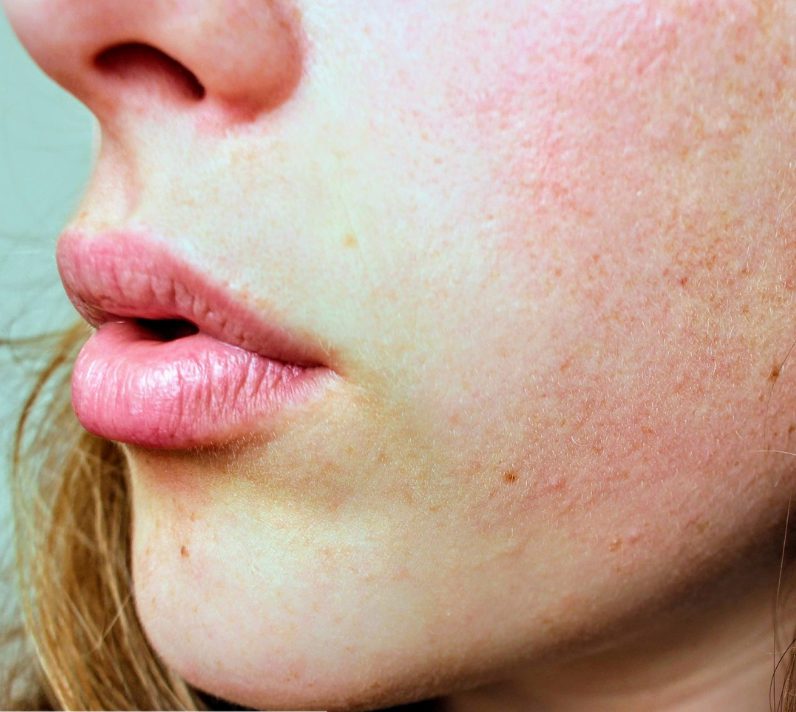
- Published in Blog


